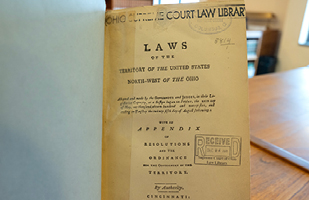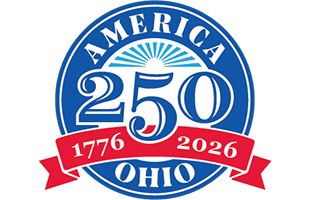Celebrating the Northwest Ordinance and Its Legacy


What does a 238-year-old document have to do with justice in Ohio today? More than you might think.July 13, 1787, marks a pivotal day in American history. On this date, the Confederation Congress adopted the Northwest Ordinance, a bold charter for governance that not only shaped the legal foundation of Ohio but continues to inspire our commitment to justice today.
The Northwest Ordinance established a structure for administering justice in a fledgling territory that would one day include Ohio. It outlined the creation of courts, rules for judiciary appointments, and a legal framework to uphold the rule of law. Among its pivotal contributions was the requirement that governance in the territory prioritize justice for all, ensuring that the judiciary would serve as a guarantor of rights and freedoms. This resonates deeply in Ohio’s legal system and the work of its courts today, including the Supreme Court of Ohio. Among the five states shaped by the Northwest Ordinance, Ohio shines prominently, becoming the first state carved from the Northwest Territory in 1803.
The Ohio Supreme Court has a unique connection to this history through a remarkable artifact that serves as a tangible link to this transformative era. The Court's Law Library houses its oldest Ohio-related book, a fragile but priceless volume, which contains the laws of the Northwest Territory. The book has been digitized and made accessible to all, preserving its significance for future generations. It is more than just a relic; it is evidence of the legal framework that shaped governance here in Ohio.
Like the judiciary it helped guide, this book serves as a vital connection to our past and a reminder of the enduring principles that shape our present.


This document not only established a framework for governing the Northwest Territory but enshrined principles that became cornerstones of our nation's identity. Civil liberties, the prohibition of slavery in new territories, and the promotion of education were etched into its articles, offering a lasting blueprint for justice.
The predecessor of modern state constitutions, the Northwest Ordinance provided the pathway for newly formed states to join the Union on equal footing with the original thirteen. It outlined a tri-stage process for statehood, highlighting an orderly and inclusive method for growth that strengthened the federal framework while balancing local autonomy.
Significantly, this document called for rights like the trial by jury, habeas corpus, and protections for religious freedom, ensuring that individual freedoms would endure as foundational elements in the American experiment. Just as compelling was its emphasis on education, declaring that “schools and the means of education shall forever be encouraged.” This commitment echoes in the Ohio Supreme Court’s commitment to civic education through our Visitor Education Center and school tour program.
With the upcoming America 250 celebration approaching in 2026, we are reminded of the Northwest Ordinance's role as a cornerstone for the United States of America. Honoring the 250th anniversary of our nation's founding compels us to revisit the values and frameworks that allowed the young republic to flourish.
On this anniversary, as Chief Justice of the Supreme Court of Ohio, I celebrate the Northwest Ordinance not only as a foundation of our state’s history but as a timeless testament to the power of the judiciary to create a more just future.
By remembering the bold and expansive ideals of the Northwest Ordinance on this anniversary, we honor not only its framers but also our shared commitment to the enduring principles it stands for.


